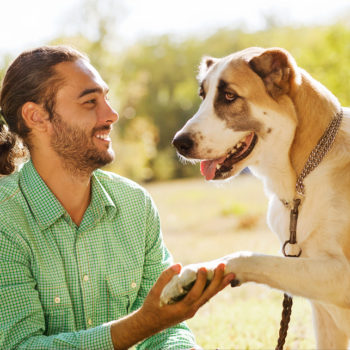Can a few days at an apprenticeship change your perspective on no-kill sheltering and foster care for large dogs? After attending Maddie’s® Medium and Large Adult Dog Foster Program Apprenticeship at Austin Animal Center, Patricia Zimmerman from Prince George’s County Animal Services in Maryland says it sure can. And it did.
“It was amazing,” she said. “The innovation, thoughts, ideas were all so inspiring and motivating. And it showed how fostering goes beyond its basic definition and makes room for other dogs in the shelter, enhances the quality of life for animals, and increases their chances of getting adopted. Not only did I learn things, but it dispelled misconceptions I had about certain things.”
Zimmerman’s biggest misconception revolved around the meaning of no-kill.
“I used to think that when people said ‘no-kill,’ they were talking about warehousing animals. But I learned that it’s not warehousing at all,” she explained. “I realized these animals are cared for, they’re engaged. One of the biggest things that was stressed the entire time was quality of life and enrichment for the animals. We learned that beyond fostering, no-kill is incorporating a whole community mentality of people involved and invested to make sure they’re doing the best they can.”
One of the things she loved most was that both shelters in the apprenticeship have a 90 percent and above live release rate, and while they’re proud of that, they’re not satisfied with it.
“They’re not resting on a good number – they want to know how to save that last 10 percent. They’re still actively seeking answers for those animals, and that was just one of the most awe-inspiring things.”
Now Zimmerman’s ready to help her own community get there.
“I believe that Prince George’s County, MD, has that same heart and that potential. We can come together. We can have this amazing live release rate for our animals. I bet our community would jump right on it.”
She continued, “I think our industry still has a lot of old-school ways of thinking. So it’s going to take dispelling misconceptions, and looking at the innovators like Maddie’s Fund®, who are doing all of these research projects and funding things to find the answers and share them. It’s imperative that we funnel this research and new-found knowledge through the community.”
Along with debunking her own misperceptions, Zimmerman learned how to help combat roadblocks she didn’t even know existed, especially when it comes to fostering large dogs.
“Before attending the apprenticeship, I was telling someone about it and they said ‘Well, the foster program is going to be mainly for puppies and kittens because no one wants to foster a big dog.’ My jaw hit the floor in shock. Being a big dog lover myself, that response made no sense to me. But it turns out, she wasn’t the only one who thought that.”
“Thankfully, the apprenticeship gave us tools and ways to combat that way of thinking to show people that these dogs are just as worthy as cats, kittens and puppies. It taught us how to help broaden people’s horizons and give a dog a chance who maybe wouldn’t have had one in the first place.”
Some examples of ways to help overcome that roadblock include short-term foster opportunities like dog days out, power hours, sleepovers and emergency fostering.
“These are all bridges that help people overcome that fear. For instance, when someone says they don’t want to foster a big dog, you can say, ‘Okay, do you think you can do it for just one night?’ Or, ‘This dog really needs to get out of the shelter, do you think you could take her on a power hour?’ And then those bridges become gateways to help people realize for themselves that it isn’t what they thought, and that they’re just another dog.”
Zimmerman believes these are the kind of tools that need to be implanted to help those that might be nervous about incorporating a large foster dog into their family.
“Someone could take a dog for a Puppichino at Starbucks and then come back and realize, ‘Hey, I can foster this dog!’”
She now encourages everyone she knows to take advantage of these learning opportunities.
“I had such a positive experience, and learned so much that at one point my head was swimming. They sent us home with a wonderful binder of all the presentations and information we learned. They also have a Dropbox for us, as well as a social media group so all of us can continue networking with each other, share experiences, ask for each other’s advice,” she said. “I felt that not only did it provide a good amount of information, both physical and electronic, but it’s keeping us tied together in a way that we’re not going to fall out of touch, and we’re going to be able to rely on each other.”
She concluded, “I hope more people in my community will take advantage of these opportunities. I know we are capable of these amazing numbers and standing shoulder to shoulder with these other shelters.”
Can you hear the confidence in her voice? We sure can.

